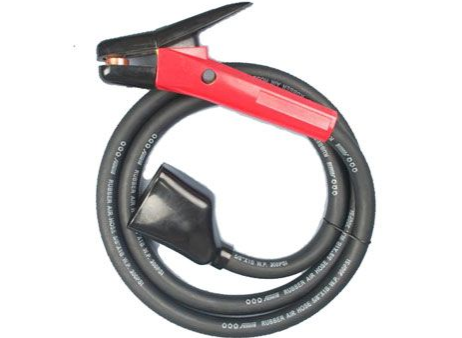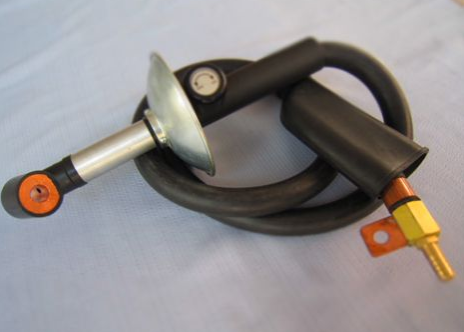Gouging and welding are two distinct processes commonly used in metalworking and fabrication. While both involve the manipulation and shaping of metal, they serve different purposes and utilize different techniques. In this article, we will explore the key differences between gouging and welding processes, their applications, and the tools used for each.
Gouging Process:
Gouging is a metal removal process that involves cutting or removing material from a workpiece to achieve a specific shape or prepare the surface for subsequent operations. The primary purpose of gouging is to remove unwanted material, such as excess weld metal, defects, or old welds. Gouging is typically performed using specialized tools and techniques, such as carbon arc gouging, air carbon arc gouging, or plasma gouging.
Need expert advice on welding or gouging tools? Whether you're choosing between carbon arc and plasma gouging, or selecting the right welding machine for your application, our team is here to help.
Contact Us for Custom Welding Solutions
Types of Gouging Methods Used in Welding Shops
Among the various gouging techniques, air carbon arc gouging is one of the most widely used in heavy industrial applications. This process uses a carbon electrode and a high-velocity air stream to blow away molten metal. On the other hand, plasma gouging is preferred for high-precision removal in thin metals or delicate applications. Choosing the right gouging method depends on the material type, thickness, and required removal quality. Understanding these options ensures efficient material preparation and less rework.
Tools and Equipment:
Gouging requires specific tools and equipment designed for metal removal. These may include carbon electrodes, gouging torches, air carbon arc gouging systems, or plasma gouging equipment. The tools generate intense heat and produce a focused arc or plasma stream to melt and remove the metal.

Gouging Torch K4000
Technique:
Gouging involves the controlled melting of the metal using heat generated by an electric arc or plasma. The operator manipulates the gouging tool over the workpiece, directing the arc or plasma stream to remove material. The depth and width of the gouge can be adjusted based on the desired result.
Applications:
Gouging is commonly used in various applications, such as:
Weld preparation: Gouging is often employed to remove excess weld metal or defective welds, creating a clean and sound base for subsequent welding operations.
Repair and maintenance: Gouging is used to remove damaged or worn-out components, such as machinery parts, to prepare them for repair or replacement.
Demolition and construction: Gouging is employed to cut or remove metal in construction projects, such as removing old structures or preparing surfaces for new installations.
Gouging vs. Grinding – Which to Use?
While both gouging and grinding are used for metal removal, gouging is better suited for deep or fast material removal, especially when dealing with thick welds or heavy plates. Grinding, in contrast, is more suitable for surface finishing or shallow imperfections. For cost- and time-effective results, many fabrication shops prefer carbon arc gouging to quickly expose clean metal surfaces prior to rewelding.

Gouging Torch
Welding Process:
Welding, on the other hand, is a joining process that fuses two or more pieces of metal together to form a strong and continuous joint. The primary purpose of welding is to create a permanent bond between the workpieces, allowing them to function as a single component. Welding involves the application of heat, pressure, or a combination of both, along with a filler material, if necessary.
Why Choose Welding Over Other Joining Methods
Compared to mechanical fastening like bolting or riveting, welding offers superior structural integrity, airtight sealing, and reduced weight in fabricated assemblies. Industries such as aerospace and pressure vessel manufacturing rely heavily on high-quality welds to ensure long-term safety and performance. Additionally, automated welding systems increase productivity while maintaining consistent weld quality.
Tools and Equipment:
Welding requires specific tools and equipment depending on the welding process used. Common welding techniques include shielded metal arc welding (SMAW), gas metal arc welding (GMAW), gas tungsten arc welding (GTAW), and flux-cored arc welding (FCAW). Each process may require different types of welding machines, welding electrodes, shielding gases, or consumables.
Technique:
Welding involves the creation of a molten pool at the joint interface by applying heat generated from an electric arc or other heat sources. The operator then introduces a filler material, if needed, to join the workpieces. The molten metal solidifies, creating a strong bond between the materials.
Applications:
Welding is widely used in various industries and applications, including:
Construction: Welding is crucial in the construction of structures, bridges, pipelines, and other infrastructure projects.
Automotive and aerospace: Welding is employed in the manufacturing and assembly of vehicles, aircraft, and their components.
Manufacturing and fabrication: Welding is used to join metal components in the production of machinery, equipment, and consumer goods.
Repair and maintenance: Welding is utilized to repair damaged or worn-out metal parts, extending their service life.
Welding or Gouging—Which Comes First in Fabrication?
In most fabrication workflows, gouging is the preliminary step, used to remove old welds or prep metal surfaces. Welding follows, ensuring the new joint adheres cleanly to defect-free base material. Understanding this sequence is key to minimizing structural flaws and meeting international welding codes.









